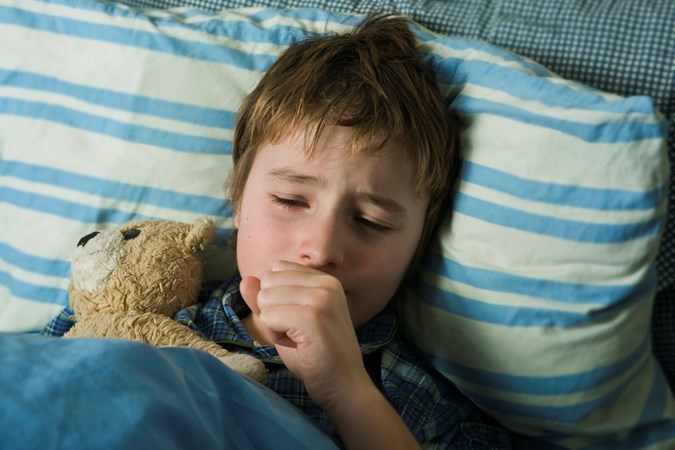What is croup? Is it contagious and how do you treat croup?

Expert tips to help you manage it
By Gina Flaxman
May 14 2019
What is croup?
Croup is a swelling of the voice box (larynx) and wind pipe (trachea), usually caused by a viral infection. This swelling makes the airway narrower so it is harder to breathe.
It is very common in children between six months and five years and mild cases can be managed at home.
What are croup symptoms?
Your child will normally start off with a regular cold, with a runny nose, fever and coughing.
The classic croup cough sound is harsh and barking. When your child breathes in, they may also make a squeaky, high-pitched noise, called a stridor. Your child may also have a hoarse voice and breathe noisily. The symptoms usually become worse at night.
In severe cases, the skin between your child’s ribs or under their neck may suck in when they breathe and they may struggle to breathe.

Getty Images
How to manage croup
Mild croup – when your child has a croup cough (a barking cough) but no stridor when they are calm, and no breathing difficulties – can be managed at home. Try to keep your child calm and quiet as the symptoms become worse when they are distressed. Offer fluids regularly.
You can give them infant paracetamol or ibuprofen if they have a fever. Croup is usually caused by a virus so antibiotics won’t work. Some parents like to use vaporisers and humidifiers in their child’s room but doctors don’t recommend them. There is no evidence that humidified air helps croup and there is a risk of burns from the steam.
When to see a GP about croup
If the croup hasn’t resolved in a few days or is getting worse, see your doctor. You should see a doctor immediately if your child is under six months and has symptoms of croup. Croup in babies needs urgent medical attention.
You should also see your doctor if your child has a stridor when resting, if a stridor returns after they have recovered from croup or if you have any concerns about their breathing. The doctor may prescribe oral steroids (prednisolone or dexamethasone) to reduce the swelling in the airway.

Getty Images
When to call an ambulance
You should call 000 immediately if your child is struggling to breathe, starts to drool or can’t swallow, becomes pale and drowsy, their lips turn blue or their breastbone sucks in when they breathe in.
In severe cases, hospital staff may give your child adrenalin in the form of a mist that is inhaled into the lungs through a nebuliser. This will relieve the swelling in the airway until the steroids start to work. They will need to be closely monitored in hospital.
Is croup contagious?
Croup itself is not contagious but the virus that caused the croup is, so you should keep your child home from school or childcare while they are sick to avoid spreading the virus. Wash hands regularly and try to get your child to sneeze and cough into their elbow.
How long is croup contagious for?
Your child is usually contagious for about three days after the illness has started or until the fever has gone. The symptoms usually last about three or four days. If croup symptoms persist after four days, even mildly, see a doctor.
Croup can get worse very quickly. If your child has any problems breathing, seek urgent medical attention.
Can adults get croup?
Croup in adults, and even older children, is very rare, though it is possible for children as old as 15 to develop croup.
For a croup fact sheet, visit the Royal Children’s Hospital.













